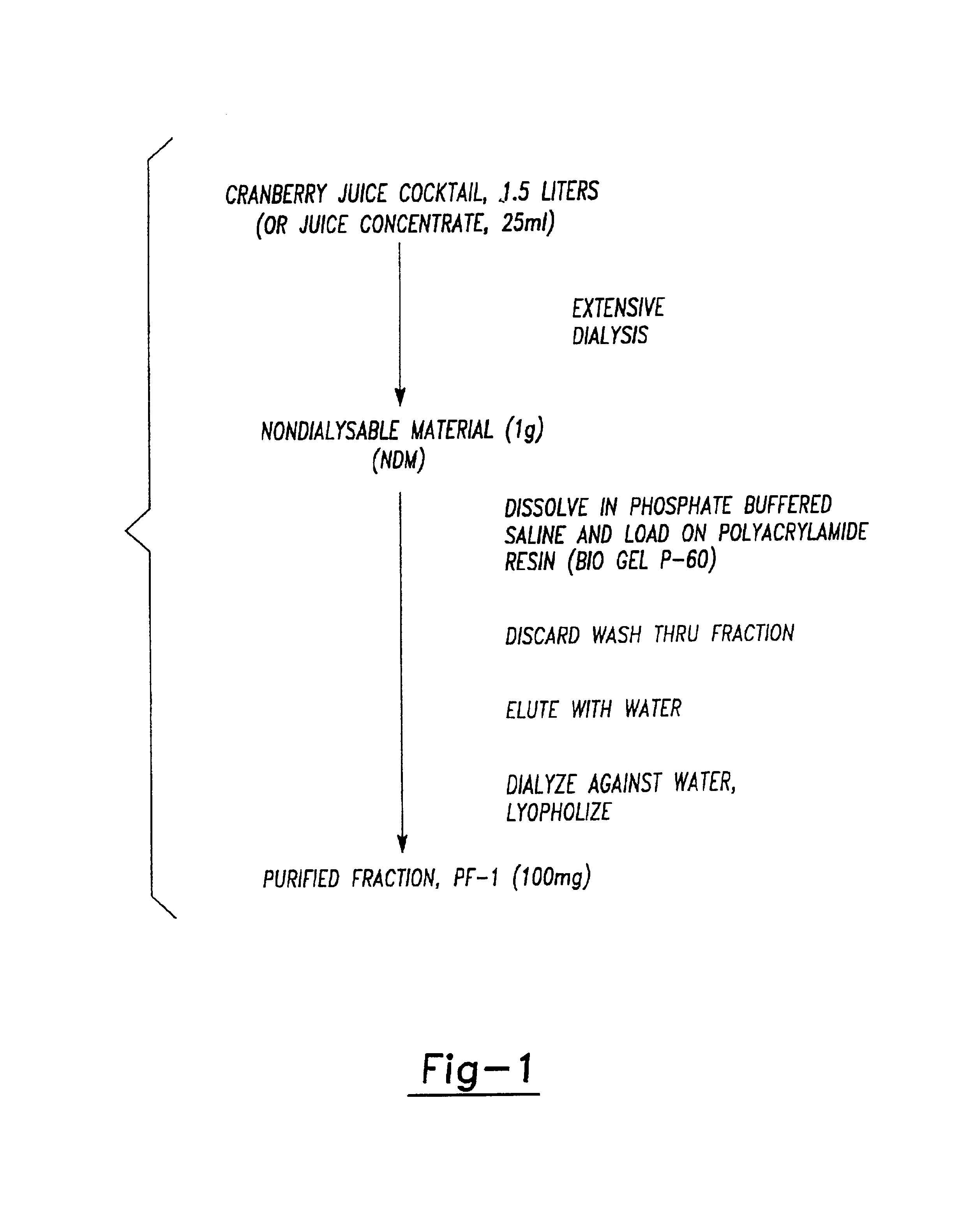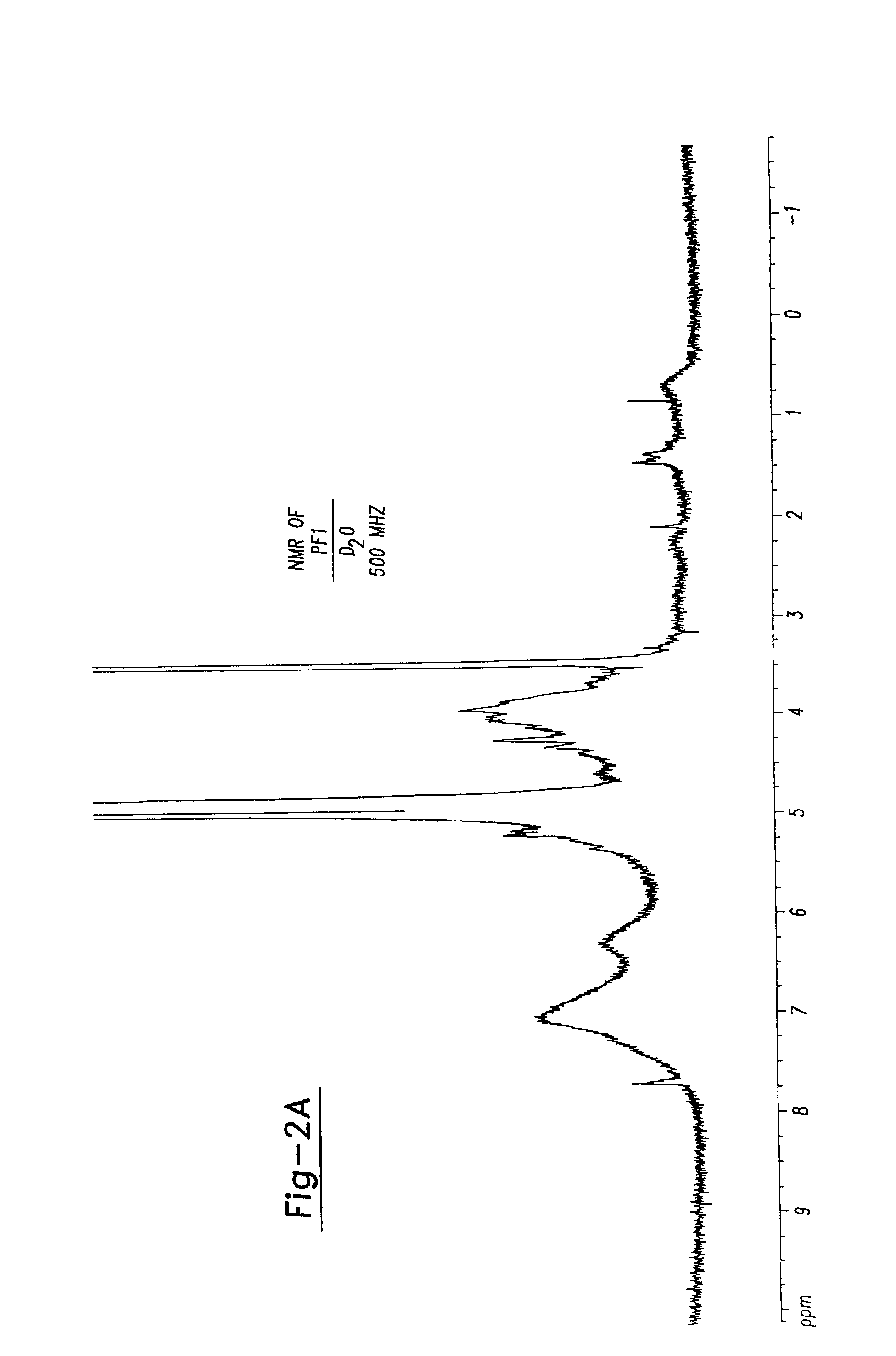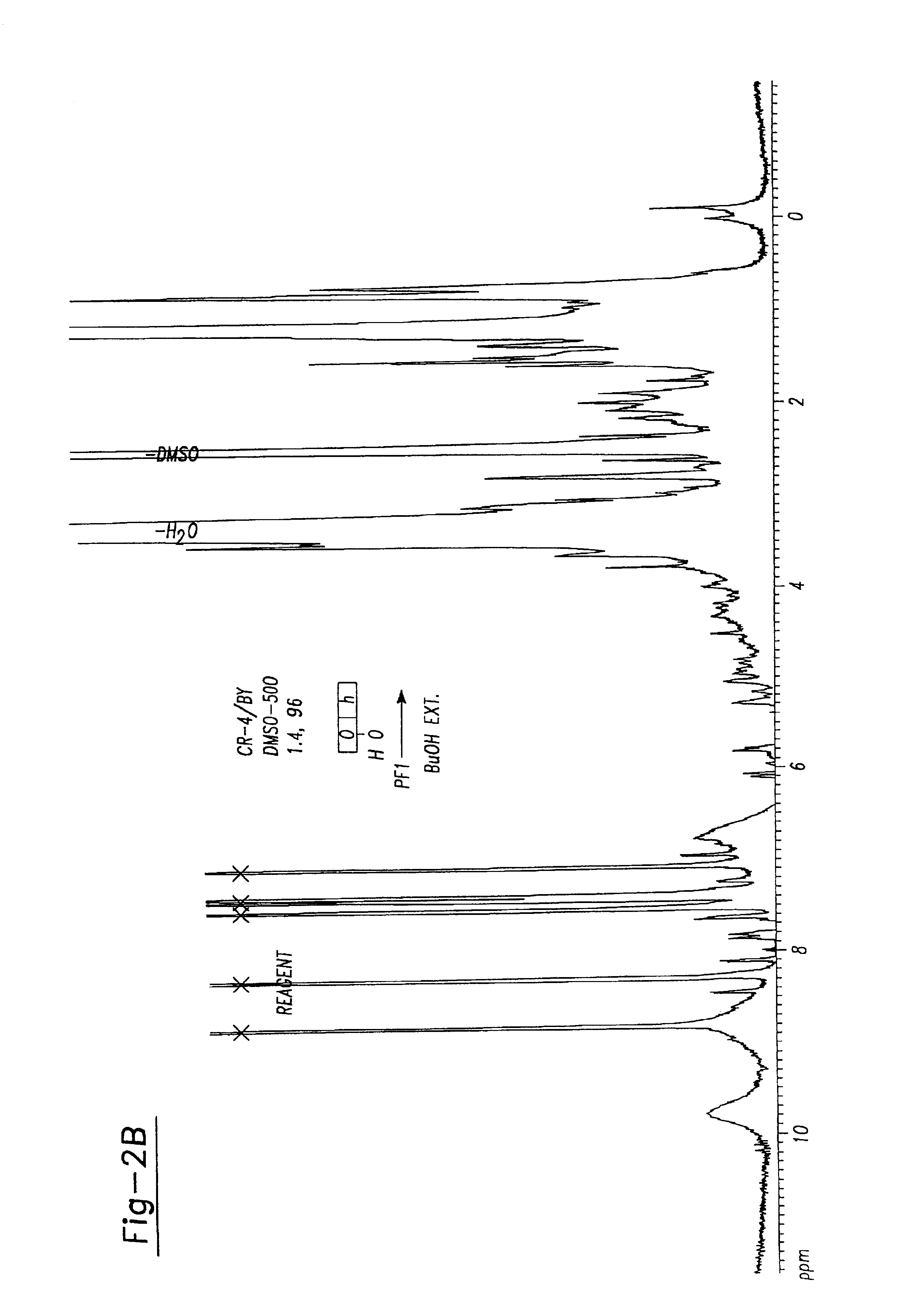Anti-microbial-adhesion fraction derived from vaccinium
- Summary
- Abstract
- Description
- Claims
- Application Information
AI Technical Summary
Problems solved by technology
Method used
Image
Examples
example 1
Isolation of PF-1
As an exemplar, the isolation of an anti-microbial adhesion inhibitory fraction (PF-1) from cranberry juice (cocktail or concentrate) was undertaken generally as diagramed in FIG. 1.
Isolation from Cranberry Juice Concentrate
Concentrated cranberry material (CCM; 500 ml), known as juice concentrate, is dialyzed against 5 liter distilled water (changed twice daily) for eight days. The commercial source was generally Ocean Spray, but other commercially available sources can be used. Dialysis tubing is from Spectrum Medical Industries, Inc., 60916 Terminal Annex, Los Angeles 90054. Applicants used Molecular cut off 12000-14000, diameter 28.6 cm (6.4 vol. / cm; Catalog No. 132680).
The material remaining in the dialysis tube (non dialyzable material-NDM) is collected and lyophilized to powder, generally yielding 20 g. The NDM is used in some Examples as described herein. The NDM is solubilized with phosphate buffered saline (PBS) pH 7.5, 0.00M Phosphate.
BioGel P-60 beads (Bi...
example 2
Analysis of Activity
Upon isolation the PF-1 fraction (and / or NDM, PF-2) is analyzed / quantitated for their anti-adhesion / aggregation activity, utilizing the hemagglutination assay, ELISA and the visual coaggregation assay allowing both a functional determination and an antigenic determination. These assays determine the minimal concentration of the fraction (dilution) needed of the material (fraction) to provide inhibition of P-fimbriated bacterial adhesion to human erythrocytes (HA) or coaggregation of the oral bacteria. Table 1 provides exemplar data. (see also Table 8)
Activity is also measured utilizing a quantitation of inhibition by use of a modified ELISA protocol (FIG. 3) as described herein below.
Materials
Microtitration plates (flat bottom, Costar); Human Erythrocytes “Koscielak Ghosts” prepared according to procedure described by D. J. Anstee & M. J. A. Tanner (1974). 3.5 ml. of material is obtained from 10 ml of packed erythrocytes, divided into aliquots and stored at −70° ...
example 3
Analysis of PF-1
PF-1 is acid precipitable in 2N HCl and can be redissolved in water without loss of activity. However, acid treatment (0.01 N HCl, 100° C., 30 minutes) results in reduced activity and not complete loss. It is not hydrolysed even in 2N HCl after 4 hours at 100° C.
Elemental analysis (Chemical Services, Organic Chemistry Department, Hebrew University of Jerusalem) of PF-1 after drying in vacuo at 60° C. gave the following range:
carbon43-51%hydrogen4-5%No nitrogen, sulfur or chlorine
PF-1 gives a positive reaction in the phenol-sulfuric acid test [Dubois et al, 1956] suggesting the presence of carbohydrate of about 15% by weight using D-glucose as the standard.
PUM
 Login to View More
Login to View More Abstract
Description
Claims
Application Information
 Login to View More
Login to View More - R&D
- Intellectual Property
- Life Sciences
- Materials
- Tech Scout
- Unparalleled Data Quality
- Higher Quality Content
- 60% Fewer Hallucinations
Browse by: Latest US Patents, China's latest patents, Technical Efficacy Thesaurus, Application Domain, Technology Topic, Popular Technical Reports.
© 2025 PatSnap. All rights reserved.Legal|Privacy policy|Modern Slavery Act Transparency Statement|Sitemap|About US| Contact US: help@patsnap.com



